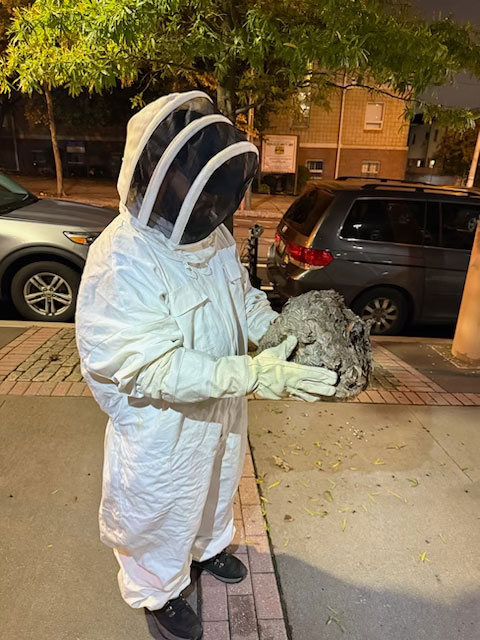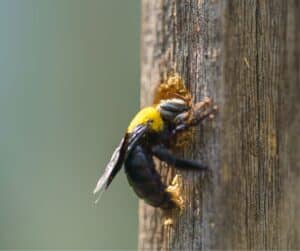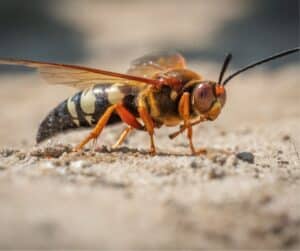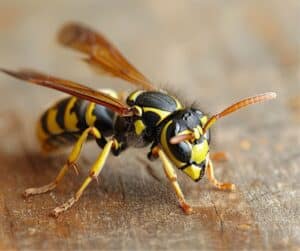
How Our Stinging Insect Control & Treatment Works
We specialize in safely and effectively eliminating bees and other stinging insects that can pose a threat or cause damage to property. Our process begins with a detailed inspection to identify the specific species and locate nests or hive sites. Understanding their behavior and habitat allows us to tailor a targeted approach for complete removal.
We identify entry points and factors attracting these pests, addressing the root causes of the infestation. Our team uses safe, environmentally-conscious methods to remove hives or nests while implementing preventative measures to reduce the risk of future issues.
Whether it’s a one-time removal or a customized prevention plan, our skilled technicians are equipped with advanced tools and expertise to handle stinging insect problems. We prioritize the safety of your family, pets, and property while restoring peace to your outdoor spaces.
What Types of Stinging Insects Do We Treat?
Bees
- Generally non-aggressive
- Can sting if provoked, posing a risk to those with allergies
To prevent bees from nesting near your home, regularly inspect your property for any signs of hives, especially in sheltered areas like eaves, attics, and sheds. Seal any cracks or openings in your walls and roof. Avoid leaving sweet foods or drinks outside, as they can attract bees.
Carpenter Bees
- Bore into wood to create their nests
- Can cause structural damage
- Often target untreated wood, such as eaves, decks, and outdoor furniture
- Generally non-aggressive
To prevent carpenter bees from nesting, regularly inspect and maintain wooden structures around your home. Painting or staining wood can deter them, as they prefer untreated surfaces. Seal any existing holes to prevent bees from reusing them.
Cicada Killers
- Intimidating due to their size and buzzing
- Generally non-aggressive towards humans
- Dig burrows in the ground, often in sandy or loose soil, where they lay their eggs
- Create unsightly mounds and damage lawns/gardens
To prevent cicada killers from nesting in your yard, maintain healthy, dense grass and fill any bare patches with soil and grass seed. Regularly water your lawn to keep the soil compact, making it less attractive for burrowing.
Hornets
- Aggressive
- Paper-like nests
- Large nests in trees, shrubs, or under roof eaves
- Painful stings
To help prevent hornets, here are some tips:
- Keep outdoor areas clean and free of food scraps to avoid attracting them.
- Ensure that outdoor garbage containers have tight-fitting lids and are regularly emptied.
- Seal any potential entry points around your home’s exterior, such as cracks or gaps in walls and foundations.
- Regularly inspect your property for signs of hornet nests, particularly in sheltered or high-up areas.
Yellow Jackets
- Particularly aggressive, especially in late summer and early fall when they are preparing their nests for the colder months
- Paper-like nests out of paper-like material
- Sting multiple times
Here are some steps you can take to prevent yellow jackets:
- Keep all food and sugary drinks covered when eating outdoors, as these wasps are highly attracted to such items.
- Be diligent about disposing of trash and ensure that garbage cans have secure, tight-fitting lids.
- Seal any potential entry points around your home’s exterior, including cracks or gaps in walls, foundations, and around doors and windows.
- Regularly inspect and clean areas where yellow jackets might be nesting or congregating, such as under roof overhangs, in wall voids, or around outdoor structures.





